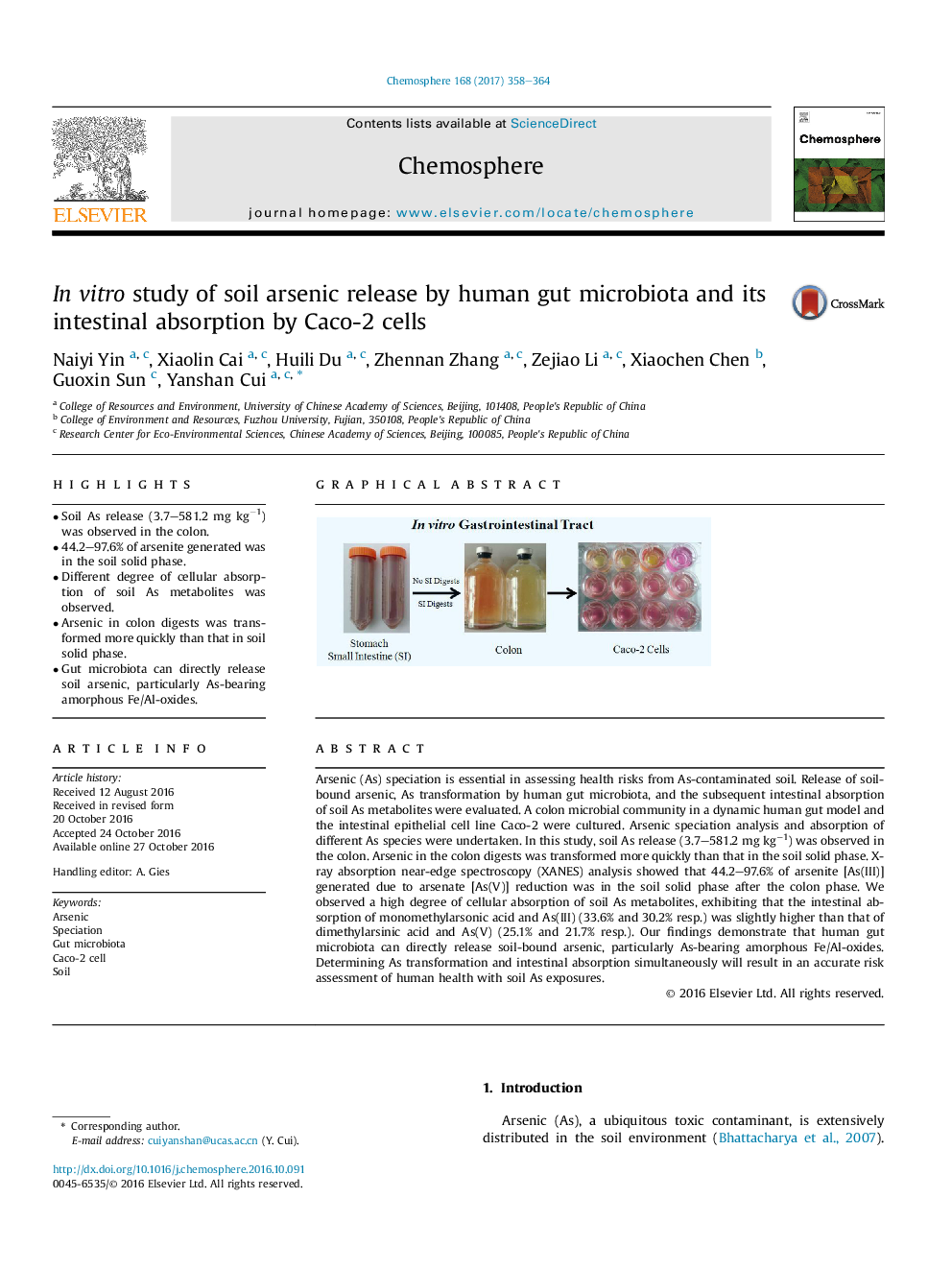| Article ID | Journal | Published Year | Pages | File Type |
|---|---|---|---|---|
| 5746662 | Chemosphere | 2017 | 7 Pages |
â¢Soil As release (3.7-581.2 mg kgâ1) was observed in the colon.â¢44.2-97.6% of arsenite generated was in the soil solid phase.â¢Different degree of cellular absorption of soil As metabolites was observed.â¢Arsenic in colon digests was transformed more quickly than that in soil solid phase.â¢Gut microbiota can directly release soil arsenic, particularly As-bearing amorphous Fe/Al-oxides.
Arsenic (As) speciation is essential in assessing health risks from As-contaminated soil. Release of soil-bound arsenic, As transformation by human gut microbiota, and the subsequent intestinal absorption of soil As metabolites were evaluated. A colon microbial community in a dynamic human gut model and the intestinal epithelial cell line Caco-2 were cultured. Arsenic speciation analysis and absorption of different As species were undertaken. In this study, soil As release (3.7-581.2 mg kgâ1) was observed in the colon. Arsenic in the colon digests was transformed more quickly than that in the soil solid phase. X-ray absorption near-edge spectroscopy (XANES) analysis showed that 44.2-97.6% of arsenite [As(III)] generated due to arsenate [As(V)] reduction was in the soil solid phase after the colon phase. We observed a high degree of cellular absorption of soil As metabolites, exhibiting that the intestinal absorption of monomethylarsonic acid and As(III) (33.6% and 30.2% resp.) was slightly higher than that of dimethylarsinic acid and As(V) (25.1% and 21.7% resp.). Our findings demonstrate that human gut microbiota can directly release soil-bound arsenic, particularly As-bearing amorphous Fe/Al-oxides. Determining As transformation and intestinal absorption simultaneously will result in an accurate risk assessment of human health with soil As exposures.
Graphical abstractDownload high-res image (289KB)Download full-size image
